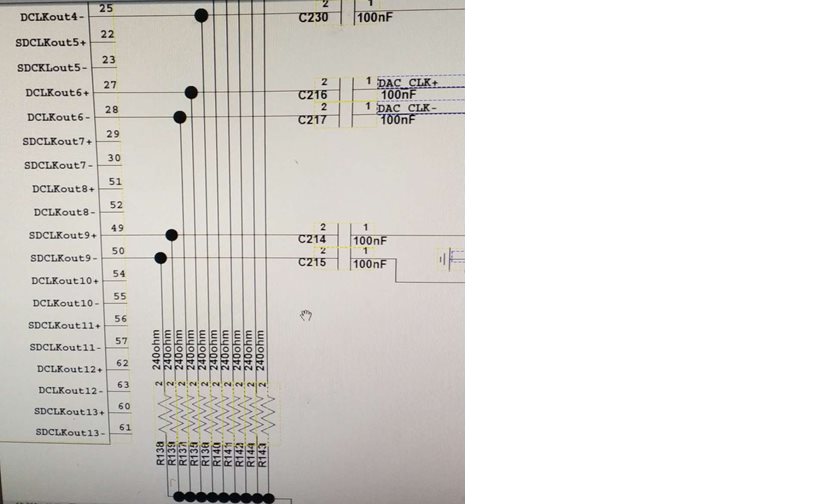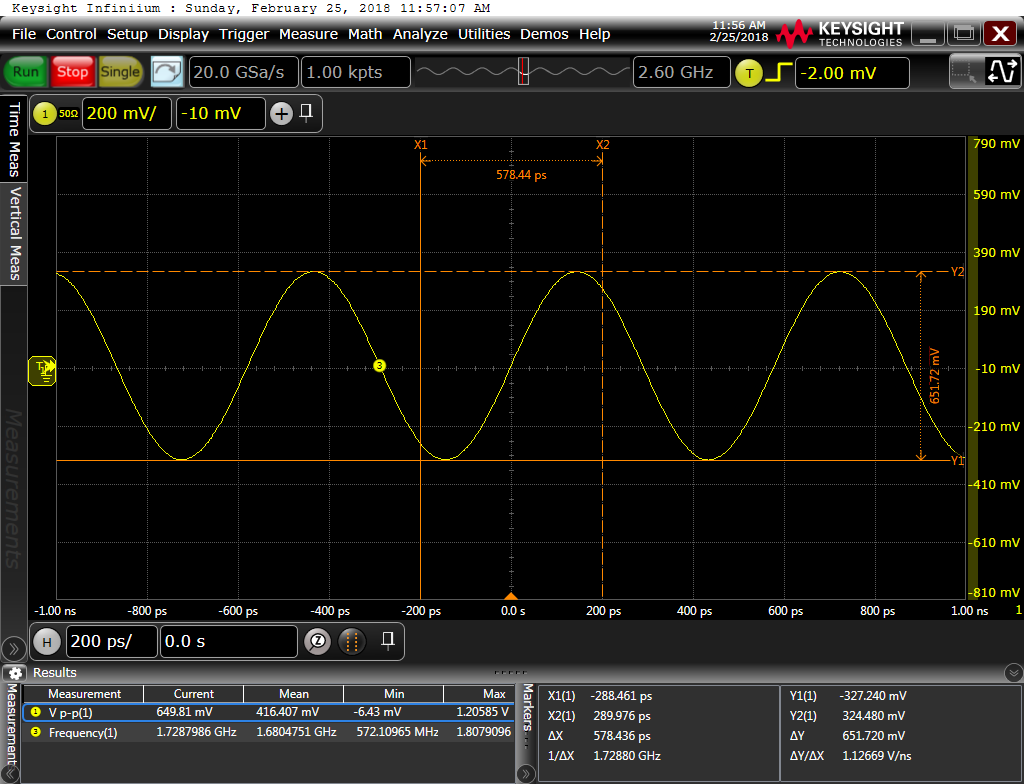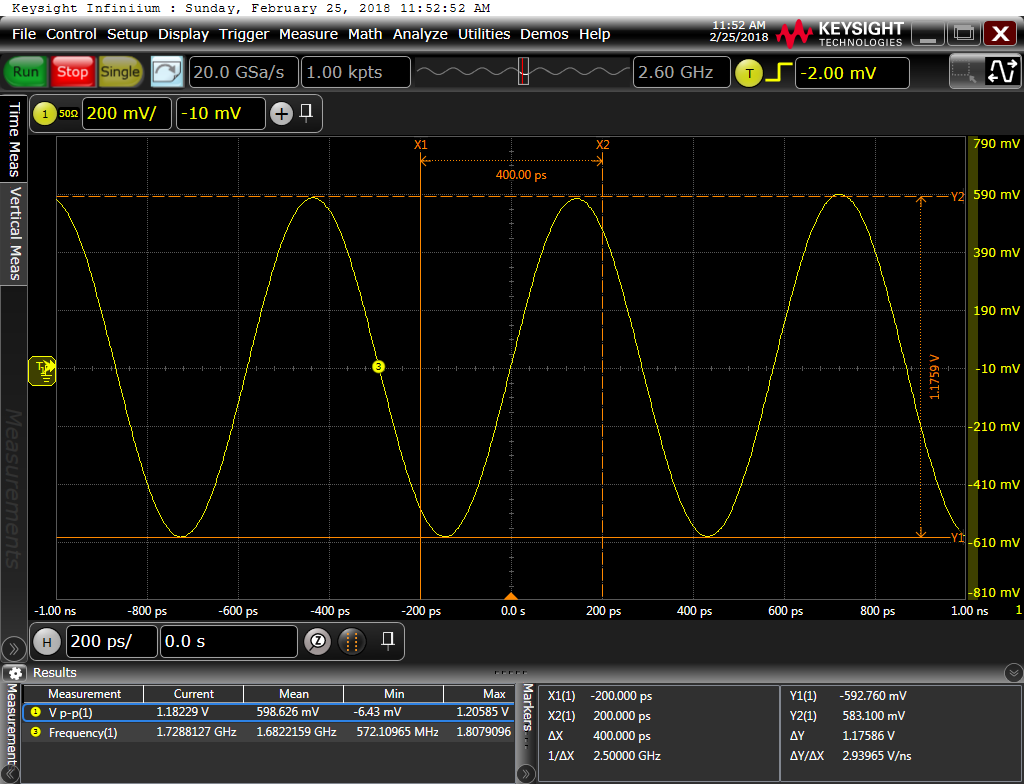Other Parts Discussed in Thread: LMK04808
Hi:
I use an LMK04828 to provide a sampling clock of DAC, with the ExternalVCO mode(1.728GHz original clock was input to CLKin1, and made DCLKOUT6 to output 1.728GHz clock. Internal PLLs were not used).
The output port is DCLKOUT6, which was set the output format of LVPECL20, and the output P/N pins are pulled-down to GND with 240ohm resistors, as below:
When use differential probe to measure the output amplitude of DCLKOUT6, the result Vpp is about 650mV, as below:
Pay attention that: the Vpp in the screenshot above is differential voltage measured with differential probe, NOT with single-ended probe measuring on one of the two differential signal lines.
The datasheet says that when output format set to LVPECL20, the VOD is 960mV, so that the differential peak-to-peak voltage is 2*960=1920mV. (Described in datasheet SNAS605AR: Page 27-Figure 9).
So, the measured 650mV is much lower than the desired 1920mV, which cannot meet the requirement of DAC sampling clock amplitude.
In view of the phenomenon, I changed the pull-down resistors from 240ohm to 50ohm for both + and - lines, then the output Vpp was increased to 1180mV, which still cannot reach the datasheet-rated 1920mV, as below:
Now, can you find me where the problem may be?
Thank you!





